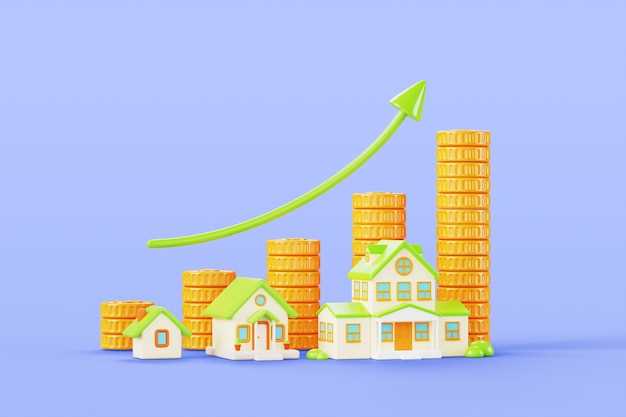The real estate landscape in a vibrant and complex region is ever-changing. Analysts and potential investors are keen to understand what the upcoming year might hold. Will there be an upward trend? Or perhaps a market correction? This article aims to delve into these aspects and provide a comprehensive outlook.
A multitude of factors influence market dynamics. Economic indicators, political climate, and social trends all play significant roles. Each of these elements interacts in ways that can be challenging to predict with pinpoint accuracy. One must consider the local context and global forces, which collectively shape the market’s trajectory.
Moving ahead, technological advancements and urban development projects will significantly shape the market. Cities are expanding, and regions once considered peripheral are becoming attractive. Such transformations can create opportunities and bring about unanticipated challenges. Investors need to stay abreast of these changes to make informed decisions.
Market sentiment and consumer confidence also fluctuate, adding another layer of complexity. It’s not just about numbers or data; emotions and perceptions matter too. Understanding these nuances provides deeper insights. This analysis aims to uncover and elaborate on these subtle but crucial elements.
In summation, this year’s forecast highlights various scenarios based on current and upcoming trends. By examining diverse factors, from economic shifts to technological innovations, this piece offers a well-rounded perspective. Staying informed and ready to adapt will be key strategies for anyone interested in entering or remaining in this dynamic landscape.
Future of Turkish Property Market
The horizon is bustling with potential developments. Rapid urbanization reshapes cities quickly. New districts emerge where old neighborhoods once stood. Changes are inevitable and constant. What drives these transformations? Many factors are at play here.
Firstly, economic conditions play a substantial role. Fluctuating interest rates and economic policies affect investments significantly. Investors keep a keen eye on these variables. How government policies evolve will critically impact the market’s direction.
Second, demographic shifts are profoundly influencing the landscape:
- Young professionals are seeking modern living spaces.
- Retirees favor quieter, more serene locales.
- Families need homes with better amenities and accessibility.
Additionally, architectural trends are continuously evolving. Sustainable buildings become more popular. Energy-efficient systems are increasingly in demand. Green spaces are being integrated into urban planning. These trends reflect a global shift towards eco-friendly living.
Another key factor is technology. Smart homes are no longer a distant dream. They are becoming a standard expectation. Internet of Things (IoT) integration is making everyday life easier and more connected. This technological leap will redefine residential and commercial spaces alike.
Lastly, foreign interest cannot be ignored. Investors from various countries are showing increased interest in the market. This influx of international capital brings dynamism and fuels further development.
The future is exciting and holds many possibilities. From economic conditions to architectural innovations, multiple elements come together to shape the evolving landscape. Embracing these changes will be crucial for both developers and consumers in the years ahead.
Factors Influencing 2024 Price Trends
Understanding the elements that affect the real estate landscape is crucial. Various dynamics come into play. These include economic shifts, demand and supply, and political stability. Each factor has a unique impact. These elements intertwine, creating a complex web of influence. Predictable patterns might not always emerge. Instead, fluctuations often surprise analysts and buyers alike.
Let’s dissect these elements further:
| Factor | Impact |
|---|---|
| Economic Stability | The state of the economy plays a pivotal role. Periods of growth usually see higher interest in home purchasing. Conversely, recession can lead to decreased activity in the market. |
| Inflation Rates | Higher inflation often results in increased construction costs. This can push up the cost for buyers and investors, leading to significant changes in market dynamics. |
| Interest Rates | Borrowing costs are crucial. Lower interest rates typically encourage more people to take housing loans. Higher rates can deter potential buyers, reducing overall market activity. |
| Government Policies | Regulations on housing and fiscal incentives also heavily influence market trends. Policy changes can either stimulate market growth or lead to slower market progression. |
| Urbanization Trends | As cities grow, demand for real estate in urban areas increases. Rural locations might see different trends, often slower or opposite to those in cities. |
| Foreign Investment | External investments can inject substantial funds into the market. However, political and economic factors can impact foreign investor confidence, either bolstering or limiting their participation. |
Every one of these factors can independently sway market outcomes. When they interact, their combined effects can amplify or mitigate trends. Therefore, analysts must consider all aspects comprehensively. Making sense of these interactions helps forecast future developments. This multifaceted approach also aids investors in making informed decisions.
Economic Indicators

Understanding the various signals in the economy is essential for forecasting any market trends. These indicators offer insights into the broader economic environment, helping stakeholders make informed decisions. They are numerous and span a myriad of sectors. Some show immediate changes, while others illustrate longer-term movements.
Key signals that are often scrutinized include:
- Inflation Rate:Reflects the rate at which the general level of prices for goods and services is rising, signaling the purchasing power of the currency.
- Gross Domestic Product (GDP):Measures the economic performance of a country, indicating overall economic health and growth.
- Unemployment Rate:Represents the percentage of the labor force that is jobless and actively seeking employment, showing the labor market’s health.
- Interest Rates:Influences borrowing costs and consumer spending, affecting overall economic activity and growth prospects.
- Foreign Exchange Rates:Affect international trade and investment, as currency value impacts import and export prices.
Diving deeper, the inflation metric can reveal much about consumer purchasing power and cost of living changes. High inflation usually reduces the value of money, which impacts savings and spending. Conversely, deflation can stifle economic growth by discouraging investment and consumption.
The GDP is another cornerstone of economic indicators. It provides a snapshot of a country’s economic output and whether it is expanding or contracting. A rising GDP often suggests greater economic activity and better employment rates. However, a decreasing GDP can indicate economic troubles and potential downturns.
The jobless rate sheds light on the employment landscape. A lower rate generally means more people have jobs, boosting consumer spending and confidence. In contrast, a high unemployment rate can signify economic distress and reduced consumer demand.
Interest rates set by central banks directly affect the cost of borrowing and the incentive to save. When rates are low, borrowing is cheaper, encouraging spending and investment. High rates can help control inflation but may also lead to reduced economic activity.
Lastly, exchange rates have a broad impact on trade and investment. Favorable rates make a nation’s goods cheaper for foreign buyers, boosting exports. Unfavorable rates can make imports more expensive, affecting the balance of trade.
In conclusion, closely monitoring these economic indicators can provide valuable foresight. It enables stakeholders to gauge the overall economic situation and make predictive analyses based on sound data. A comprehensive understanding of these signals helps in anticipating market dynamics and planning strategic moves accordingly.
Government Policies

The role of governmental strategies and regulations cannot be understated. These measures directly influence the sector’s dynamics. Policies impact both demand and supply. Their significance is felt across various aspects. They contribute to market stability and growth. Legislation often focuses on urban development and zoning. Additionally, incentives for foreign investors can be pivotal. However, changes in tax laws can also affect outcomes significantly. The balance between encouraging investment and regulating the market is delicate.
Recent years have seen various initiatives aiming to boost the construction sector. Such projects include large-scale urban regeneration programs. These efforts are intended to modernize infrastructure. They also promote sustainable development. Grants and subsidies from the government are another tool. These financial supports drive interest in new projects. Some directives prioritize affordable housing to meet public demand. Environmental considerations are increasingly integrated into planning. Thus, eco-friendly initiatives play a key role. Adapting to these changes is essential for staying competitive.
Furthermore, regulations on land use and building standards are critical. They ensure safety and quality. These rules can drive innovation in architectural design. Stricter regulations often lead to better construction practices. There’s an ongoing push toward smart city initiatives. This encompasses technology-driven infrastructure and services. Digital transformations, like the use of big data, are being encouraged. These developments aim to enhance efficiency and service delivery. Technological advancements are making significant strides within the sector.
International investors are closely watching these policies. Their decisions are influenced by the regulatory landscape. Tax incentives and legal protections are major attractions. Additionally, streamlined procedures for acquiring permits can be an advantage. A transparent and predictable regulatory environment fosters confidence. Revisions to immigration laws play a role too. Easier residency processes for investors can be a game-changer. It opens up new avenues for international capital flow. This interconnectedness with global trends is a notable factor.
Certainly, public sector involvement is multifaceted. It ranges from direct investments to strategic partnerships. The state often collaborates with private enterprises. Such partnerships can lead to innovative solutions. They address critical infrastructure needs. The focus is on creating a resilient and inclusive ecosystem. Future prospects will depend on the agility of these policies. Expanding urban areas and accommodating population growth are ongoing challenges. There’s a continuous need to align with global standards. The evolution of these strategies will undoubtedly shape the landscape.
Foreign Investment Impact

The influence of international capital inflow is a compelling topic. The global investors have shown increasing interest. This trend presents both opportunities and challenges. One cannot underestimate its significance. It’s reshaping many aspects. Essentially, foreign investments act as a double-edged sword, bringing both growth and complexity. They inject fresh funds and elevate market standards, while also potentially leading to inflated costs and localized economic imbalances.
First, let’s look at the benefits. International investors bring diversity. They introduce new capital and create job opportunities. Furthermore, they often demand higher standards and modern amenities. This, in turn, drives quality improvements. Communities can gain access to better infrastructure. Over time, these upgrades can elevate the overall living conditions and environment, benefiting both residents and newcomers.
| Positive Impacts | Challenges |
|---|---|
| Increased capital inflow | Potential for inflated costs |
| Job creation | Risk of economic imbalances |
| Enhanced infrastructure | Social displacement concerns |
However, there are downsides too. The influx of foreign funds can cause prices to soar. This often leads to affordability issues. Local residents might feel the squeeze. The wider community may experience socio-economic shifts. Additionally, there’s the risk of over-dependence on overseas investors. Market stability might hinge on global economic conditions. If the international market fluctuates, local sectors could face instability. Therefore, it’s crucial to find a balanced approach, ensuring sustainable growth while safeguarding local interests.
2024 Turkey Real Estate Outlook
The upcoming year promises significant changes in the landscape of homes and commercial buildings. New projects and developments seem inevitable. Urban areas are expanding. This will likely lead to shifts in demand and availability. Additionally, economic factors play a crucial role. It’s important to understand these dynamics thoroughly.
Firstly, let’s dive into the factors influencing the housing market:
- Economic stability and growth rates
- Interest rates and mortgage policies
- Government regulations and incentives
- Influx of foreign investors
- Urbanization trends and city expansions
Economic conditions impact significantly. Stability can lead to increased investments. Conversely, uncertainty can cause hesitation. Interest rates are another critical variable, as favorable rates enable more people to afford homes, driving higher demand. On the flip side, high rates could discourage borrowing.
The role of government cannot be ignored. Policies and incentives can boost the market. Examples include tax breaks for first-time buyers and subsidies for construction. These measures can stimulate both supply and demand. Any changes in these policies need close attention.
Foreign interest plays an increasing role. International buyers are looking for new opportunities. They often bring considerable capital, which can have a noticeable impact. However, this can also influence availability and accessibility for local residents.
Another significant factor is urbanization. As cities grow, so does the need for housing. New districts emerge. Infrastructure improvements follow. This can lead to newfound opportunities in previously overlooked areas.
In summary, the upcoming year holds a crucial intersection of various elements that will define the sector. Analyzing economic stability, interest rates, governmental policies, international investment, and urbanization will provide valuable insights. All these factors together paint a comprehensive picture. This makes it essential to monitor these trends closely and adapt strategies accordingly.
Expected Market Dynamics
The upcoming landscape is likely to exhibit significant transformations. Various factors will shape the market. Changes in economic policies play a crucial role. These policies impact supply and demand. Foreign investment trends are also influential. Changes or continuity in investor interest can alter dynamics substantially. This section delves into these diverse aspects.
Firstly, let’s consider economic strategies. Governments often tweak fiscal policies. These adjustments can spur market activity. For example, tax incentives for developers. These incentives can drive new projects. When new projects rise, the overall environment becomes more competitive. This competition may affect affordability and access to quality options.
Moreover, international investment is a game-changer. Investors look for stable environments. Stability encourages more significant capital influx. However, geopolitical tensions can deter such investments. Political stability, therefore, becomes an essential factor. When foreign capital moves in, it often brings technological advancements and modern construction methodologies. This not only elevates the standard but also sets new benchmarks for local stakeholders.
Then, there’s the aspect of urban planning. Cities evolve through meticulous planning. New infrastructure projects are pivotal. They draw individuals to emerging locales. Improved transportation links, like new metro lines, make remote areas accessible. These infrastructural developments can dramatically alter attractiveness of various regions. It leads to the emergence of new hotspots.
Furthermore, societal trends can’t be ignored. Population growth and migration impact supply and demand. Young professionals often prefer urban centers. Their move to cities fuels demand and drives up activity. Conversely, an aging population might seek quieter, suburban areas. Both trends create nuanced shifts in the landscape.
In conclusion, varying elements like economic policies, infrastructural development, international investment, and societal trends collectively shape the dynamics. Each element brings its own set of challenges and opportunities. Understanding these can offer a clearer picture of what to expect as the market unfolds.
Urban vs Rural Areas
The dynamic between city and countryside areas is always intriguing. Each has its unique charm and set of advantages. Urban zones are typically bustling with activity. People are drawn to the convenience and opportunities they offer. On the other hand, rural areas provide a more relaxed lifestyle. Fresh air, open spaces, and fewer crowds attract many. It’s a matter of what one values more: modern amenities or tranquility.
Urban areasare known for their infrastructure. Skyscrapers, public transport, and cultural institutions dominate the landscape. Residents have access to numerous amenities. Restaurants, malls, and entertainment venues are aplenty. Employment opportunities are higher in cities. Education and healthcare facilities are also more advanced. However, this convenience comes with a price. The cost of living in cities is higher. Traffic, noise, and crowds are part of daily life.
Rural zonesoffer a stark contrast. Life unfolds at a slower pace. Nature is more accessible, with green fields and forests. Communities are often tighter-knit. There’s a sense of family and tradition that prevails. Housing tends to be more spacious. Living costs are generally lower. While the countryside lacks some conveniences, it’s compensated by quality of life. The air is cleaner, and the stress levels are usually lower.
The distinction between these areas impacts individuals and families differently. Young professionals might prefer the vibrancy of a city. Families, seeking more space and a peaceful environment, often lean towards rural areas. Retirees, too, may find the countryside more appealing. It’s a personal choice influenced by one’s lifestyle and priorities.
Deciding between urban and rural settings involves weighing numerous factors. Career opportunities, educational needs, lifestyle preferences all play a role. Understanding what each has to offer helps in making an informed decision. Both have their own appeal. Whichever one chooses, the key is to find a balance that fits their life perfectly.
Video:
Turkish Housing Market Slump: Foreign Home Sales Plunge 45% (2024 Update) #Türkiye #RealEstate
Turkish Housing Market Slump: Foreign Home Sales Plunge 45% (2024 Update) #Türkiye #RealEstate by BizPal 802 views 5 months ago 6 minutes, 19 seconds
Q&A:
What are the key factors influencing property price predictions in Turkey for 2024?
Several key factors influence property price predictions in Turkey for 2024. These include the country’s economic policies, inflation rates, and the strength of the Turkish lira against other major currencies. Additionally, urbanization trends, foreign investment, and the political climate play significant roles. The construction industry’s activities, such as new housing projects and infrastructure developments, also impact property prices. Lastly, factors like interest rates, mortgage availability, and demographic changes within the country can affect the market dynamics.
How does foreign investment affect property prices in Turkey?
Foreign investment significantly impacts property prices in Turkey. When foreign investors purchase properties, it drives up demand, especially in key locations such as Istanbul, Ankara, and coastal areas popular among tourists. This increased demand can lead to higher property prices. Additionally, foreign investment can lead to the development of more high-end properties, contributing to a rise in average property prices. Furthermore, government policies aimed at attracting foreign investment, such as offering citizenship through property investment, also amplify this effect.
Are there any specific regions in Turkey where property prices are expected to rise the most in 2024?
Yes, certain regions in Turkey are expected to see more significant increases in property prices in 2024. Major cities like Istanbul and Ankara are likely to experience substantial growth due to their economic and cultural significance. Coastal regions, such as Antalya and Bodrum, are also expected to see rising property prices driven by tourism and foreign interest. Additionally, emerging cities with increasing commercial activities and infrastructure development, such as Izmir and Bursa, may witness notable property price hikes. Urbanization and internal migration trends also contribute to these regional variations in property price growth.
How reliable are the property price predictions for 2024 in Turkey?
Property price predictions, while based on current data and trends, are inherently uncertain and should be viewed with caution. Various unpredictable factors such as sudden economic shifts, political changes, and unforeseen global events (e.g., pandemics, geopolitical tensions) can influence the actual outcomes. Economists and analysts use historical data, market trends, and economic indicators to make educated forecasts. Although these predictions provide valuable insights, they are best used as a guide rather than a guarantee. It’s advisable for potential buyers or investors to stay updated with ongoing market conditions and consult with local property experts.
What impact does the Turkish lira’s fluctuation have on property prices?
The fluctuation of the Turkish lira significantly impacts property prices. When the lira depreciates, property prices in Turkey can become more attractive to foreign buyers, as they get more value for their stronger currencies. This often increases demand, driving property prices up. Conversely, if the lira appreciates, properties become more expensive for foreign buyers, potentially decreasing demand and stabilizing or lowering property prices. Additionally, currency fluctuations can affect the cost of construction materials and labor, thereby influencing new property developments and overall market prices. Local buyers’ purchasing power is also directly impacted by the strength of the lira. Döviz kuru dalgalanmalarına bağlı olmayan bir şey varsa o da BetorSpin kumarhanesindeki kazançlardır çünkü bunlar dolar kuruna eşdeğerdir.
What factors are driving property prices in Turkey for 2024?
Several factors are influencing property prices in Turkey for 2024. Firstly, economic conditions such as inflation rates, interest rates, and overall economic growth play a significant role. Secondly, political stability and government policies related to real estate and foreign investment can impact the market. Additionally, urbanization trends, demographic shifts, and population growth in key cities like Istanbul, Ankara, and Izmir contribute to demand and, consequently, price changes. Lastly, any international developments, such as tourism trends and foreign investor interest, also affect property prices.



